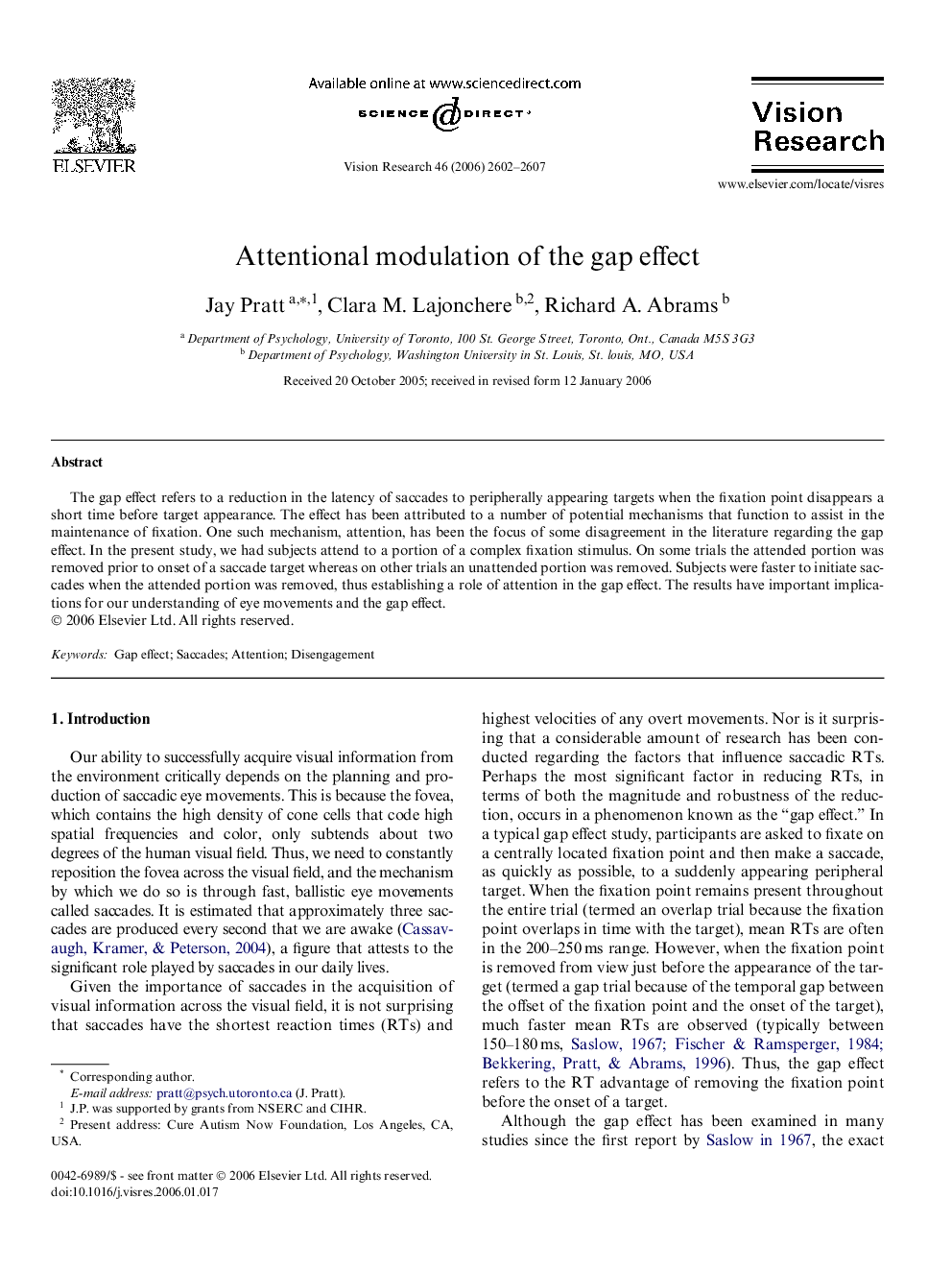| Article ID | Journal | Published Year | Pages | File Type |
|---|---|---|---|---|
| 4036241 | Vision Research | 2006 | 6 Pages |
The gap effect refers to a reduction in the latency of saccades to peripherally appearing targets when the fixation point disappears a short time before target appearance. The effect has been attributed to a number of potential mechanisms that function to assist in the maintenance of fixation. One such mechanism, attention, has been the focus of some disagreement in the literature regarding the gap effect. In the present study, we had subjects attend to a portion of a complex fixation stimulus. On some trials the attended portion was removed prior to onset of a saccade target whereas on other trials an unattended portion was removed. Subjects were faster to initiate saccades when the attended portion was removed, thus establishing a role of attention in the gap effect. The results have important implications for our understanding of eye movements and the gap effect.
